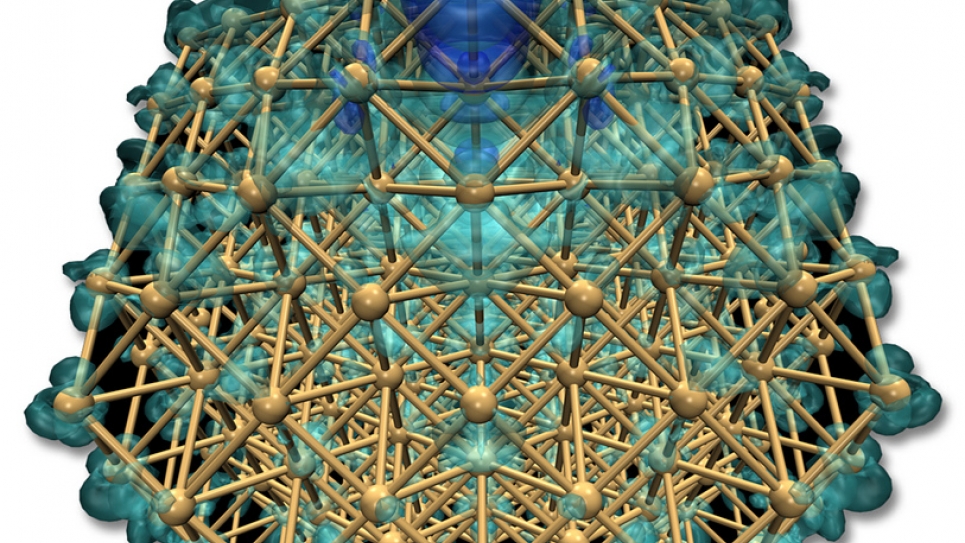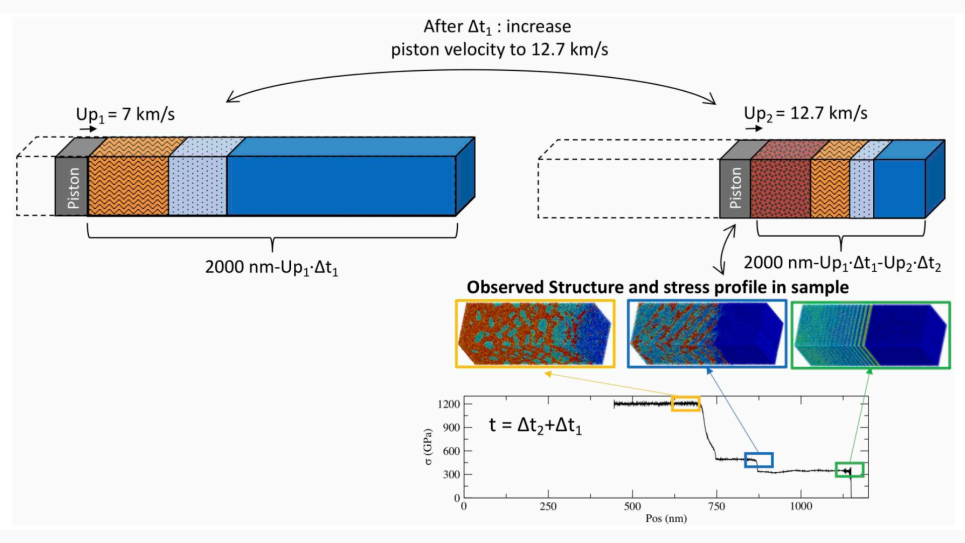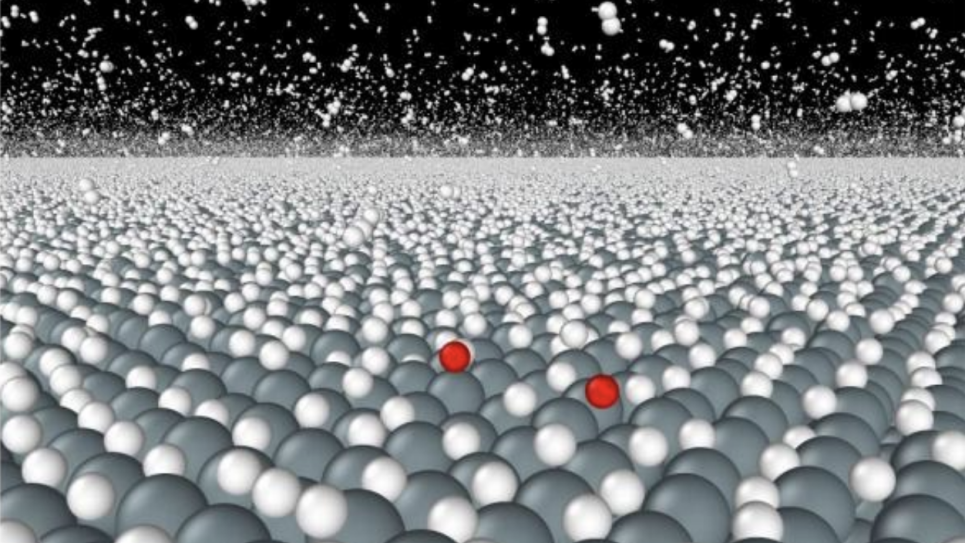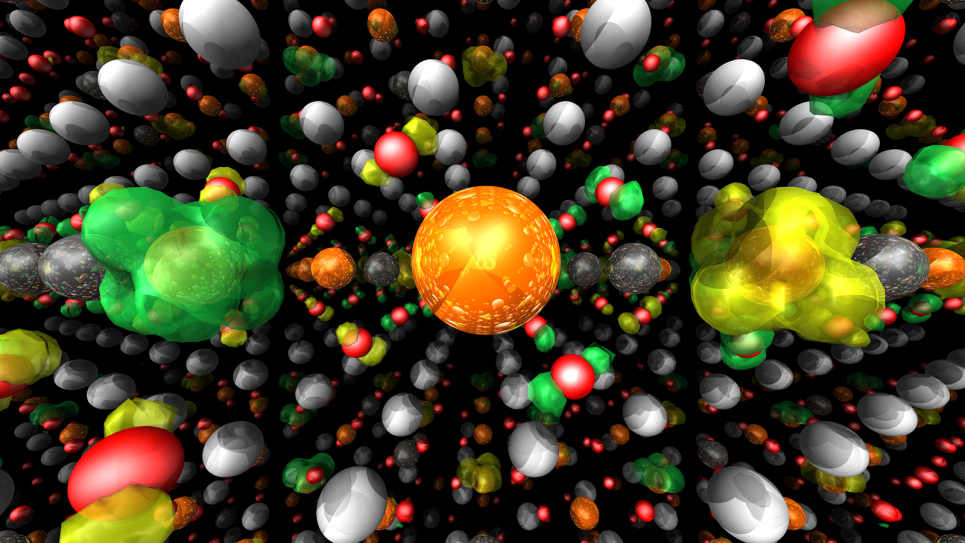
Probing the non-scalable nano regime in catalytic nanoparticles with electronic structure calculations
To get insight into quantum-size effects (QSE) of nano-clusters and estimate the impact on their catalytic ability, Argonne researchers, in collaboration with colleagues at the Technical University of Denmark, performed Density Functional Theory (DFT) calculations on cuboctahedral gold clusters with adsorbed oxygen and carbon monoxide. The effective cluster sizes ranged from 0.5 to about 4 nm (13 to 1,415 atoms). The calculations were done on the IBM Blue Gene/P supercomputer at the Argonne Leadership Computing Facility. The researchers found the QSE to be energetically converged for clusters larger than 309 atoms – where they obtained the adsorption characteristics of single crystal surfaces. The QSE effects were on the order of 1 eV and had a huge impact on the estimated catalytic properties of the clusters. They also found the QSE to be essentially reproduced by a simple, tight-binding model with nearest-neighbor matrix elements estimated from bulk-gold calculations and fit to reproduce the adsorption characteristic of the single-crystal surfaces.
Research accomplishments include:
- Completed parallelization of dense linear algebra—can now always run in VN mode with state-parallelization and will never run out of memory;
- Found new, efficient BG/P mappings;
- Did additional general tuning of the parallel performance and are working more closely with IBM to optimize the code further;
- Discovered a scheme that corrects for numerical grid effects (egg-box effect), which can sum up to several eVs for large systems – and which furthermore influence the relaxation of clusters (grid-snapping to hotspots of the egg-box effect).
Currently, the researchers are pursuing geometric relaxation of larger clusters and focusing their efforts on Pt and Rh, which, contrary to Au, have a partially filled d-band. They continue to work on integrating the HDF5 library into GPAW to allow the efficient restart of calculations using wave functions. They’re also addressing a thorny technical challenge: Dense diagonalization arising from ScaLAPACK is one of several Amdahl limitations in the canonical O(N3) DFT algorithm. This is a non-trivial algorithmic bottleneck that will likely require implementing O(N) DFT algorithms as a resolution.


